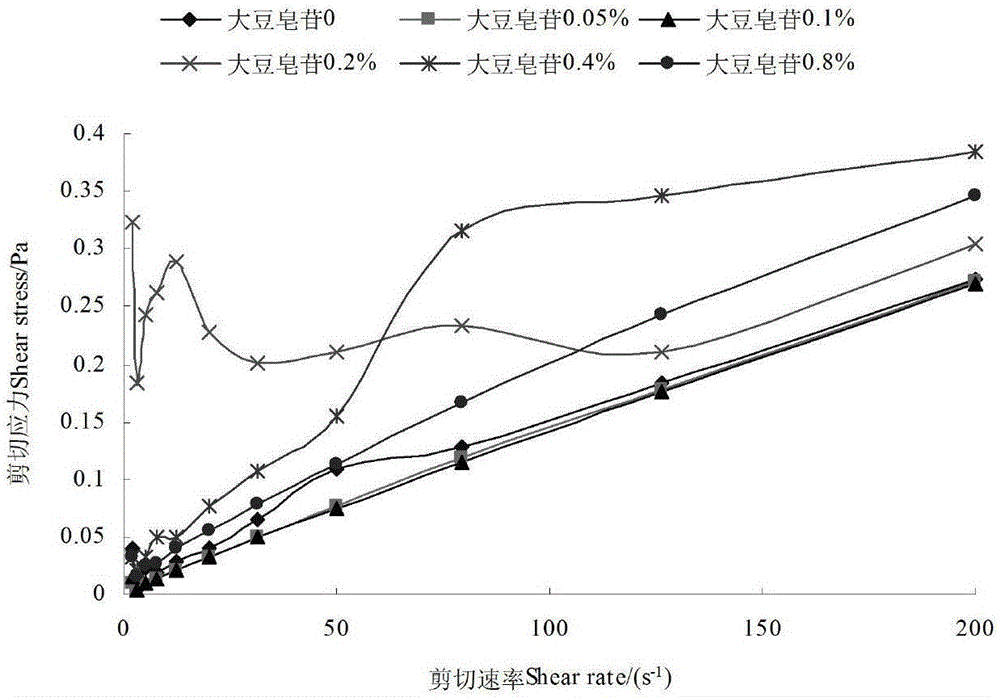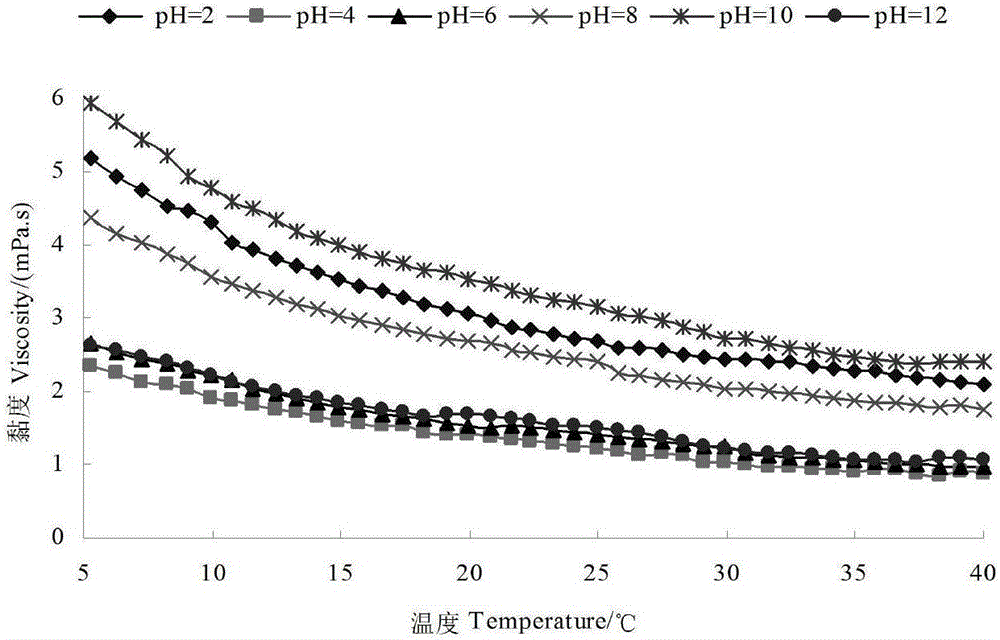Method for analyzing interaction between saponin and protein
A protein and saponin technology, applied in the field of saponin-protein interaction analysis, can solve the problems of lack of systematic research and rapid analysis of the influence of inherent morphological changes in food, restricting the research and development of saponin-type functional foods, and lack of analysis and evaluation methods for interaction.
- Summary
- Abstract
- Description
- Claims
- Application Information
AI Technical Summary
Problems solved by technology
Method used
Image
Examples
Embodiment 1
[0041] Sample preparation to be tested:
[0042] After the soybean protein isolate is added to the phosphate buffer solution, whip quickly to disperse the soybean protein isolate evenly, then stir at a constant speed for 3 minutes to form a soybean protein isolate solution, so that the volume ratio of the soybean protein isolate to the soybean protein isolate solution is 1g:100ml, That is, the mass concentration of soybean protein isolate is 1%. During the uniform stirring process, soybean saponin Ab of different quality is added and then stirred for 5 minutes, so that the mass concentration of soybean saponin Ab is respectively 0.05%, 0.1%, 0.2%, 0.4%, 0.8%, the sample to be tested was obtained, and the sample without soybean saponin Ab was used as a control. A rheometer was used to investigate the influence of soybean saponin Ab on the rheological properties of soybean protein isolate solution, and the changes of the processing environment influencing factors pH, salt ion co...
Embodiment 2
[0055] 1. Preparation of samples to be tested:
[0056] After adding the egg white protein into the phosphate buffer solution, whip quickly to disperse the egg white protein evenly, and then stir at a constant speed for 4 minutes to form an egg white protein solution, so that the volume ratio of the soybean protein isolate to the soybean protein isolate solution is 0.5g:100ml, that is, soybean The mass concentration of the protein isolate is 0.5%. During the process of stirring at a constant speed, add soybean saponin Bb of different quality and continue to stir for 6 minutes, so that the mass concentration of soybean saponin Bb is 0.1%, 0.2%, 0.3%, 0.4% and 0.5%. , that is, the sample to be tested was obtained, and the sample without soybean saponin Bb was used as a control. A rheometer was used to investigate the effect of soybean saponin Bb on the rheological properties of egg white protein solution, and the changes of the processing environment influencing factors pH, salt...
PUM
| Property | Measurement | Unit |
|---|---|---|
| Diameter | aaaaa | aaaaa |
| Diameter | aaaaa | aaaaa |
Abstract
Description
Claims
Application Information
 Login to View More
Login to View More - R&D
- Intellectual Property
- Life Sciences
- Materials
- Tech Scout
- Unparalleled Data Quality
- Higher Quality Content
- 60% Fewer Hallucinations
Browse by: Latest US Patents, China's latest patents, Technical Efficacy Thesaurus, Application Domain, Technology Topic, Popular Technical Reports.
© 2025 PatSnap. All rights reserved.Legal|Privacy policy|Modern Slavery Act Transparency Statement|Sitemap|About US| Contact US: help@patsnap.com



